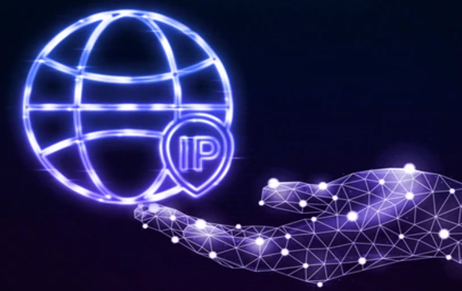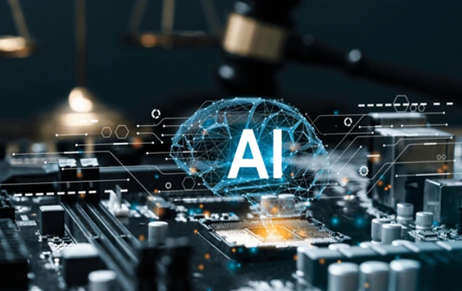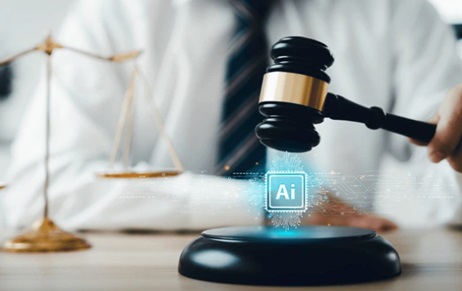Intellectual Property Rights (IPR) are like different keys for different locks. Just like every lock…
Revised Guidelines for Examination of Computer-related Inventions (CRIs)
On 30th June 2017, the Office of the Controller General of Patents, Designs, and Trade Marks (CGPDTM) published Revised Guidelines for Examination of Computer-related Inventions (CRIs) that are applicable with immediate effect. The revised guidelines have replaced the Guidelines for Examination of CRIs, published on 19th February, 2016. The revised guidelines are short and precise as compared with the previous versions and have relaxed the criteria for patentability of the CRIs.
The heart of the 2016 guidelines was a three stage test to examine a CRI application, according to which the Examiners may:
- Properly construe the claim and identify the actual contribution
- If the contribution lies only in mathematical method, business method or algorithm, deny the claim
- If the contribution lies in the field of computer programme, check whether it is claimed in conjunction with a novel hardware and proceed to other steps to determine patentability with respect to the invention. The computer programme in itself is never patentable. If the contribution lies solely in the computer programme, deny the claim. If the contribution lies in both the computer programme as well as hardware, proceed to other steps of patentability.
Therefore, the requirement of a novel hardware was apparent under the three step test laid in 2016 guideline. The revised guidelines have however done away with this test. The revised guidelines focus on substance over form and states:
If, in substance, claims in any form such as method/process, apparatus/system/device, computer program product/ computer readable medium belong to the said excluded categories, they would not be patentable. Even when the issue is related to hardware/software relation, the expression of the functionality as a method is to be judged on its substance. It is well-established that, in patentability cases, the focus should be on the underlying substance of the invention, not the particular form in which it is claimed. The Patents Act clearly excludes computer programmes per se and the exclusion should not be allowed to be avoided merely by camouflaging the substance of the claim by its wording.
The revised guidelines further discuss determination of excluded subject matter relating to CRIs. According to the revised guidelines, it is important to ascertain from the nature of the claimed CRI whether it is of a technical nature involving technical advancement as compared to the existing knowledge or having economic significance or both, and is not subject to exclusion under Section 3 of the Patents Act.
Further, the sub-section 3(k) excludes mathematical methods or business methods or computer programme per se or algorithms from patentability. Computer programmes are often claimed in the form of algorithms as method claims or system claims with some means indicating the functions of flow charts or process steps. It is well-established that, while establishing patentability, the focus should be on the underlying substance of the invention and not on the particular form in which it is claimed.
What is important is to judge the substance of claims taking whole of the claim together. If any claim in any form such as method/process, apparatus/system/device, computer program product/ computer readable medium falls under the said excluded categories, such a claim would not be patentable. However, if in substance, the claim, taken as whole, does not fall in any of the excluded categories, the patent should not be denied.
Hence, along with determining the merit of invention as envisaged under Sections 2(1) (j), (ja) and (ac), the examiner should also determine whether or not they are patentable inventions under Section 3 of the Act.
Thus, it can be inferred that the revised guidelines focus on substance over form instead of novel hardware requirement. That is, while examining an application its substance is considered and a claim is taken as whole, if it does not fall in any of the excluded categories, the Examiner can proceed with other steps to determine patentability with respect to the invention.
Various stake holders associated with the software industry and Associated Chambers of Commerce & Industry of India (ASSOCHAM) have been lobbying for such a change. ASSOCHAM trough a communication to the Prime Minister’s Office, urged the Prime Minister to bring out appropriate amendments to the 2016 guidelines and simplify the criteria in pursuance of becoming a leading global player in areas of research and development (R&D) and software products.
In the view of the foregoing, it can be concluded that as the CGPDTM has done away with the requirement of novel hardware, the patentability criteria is eased out. This not only facilitates the patentability of CRIs but also attracts big software MNCs and startups to invest in the area of development of software technologies.
About the Author: Ms. Prigya Arora, Patent Associate at Khurana & Khurana, Advocates and IP Attorneys. Can be reached at prigya@iiprd.com



